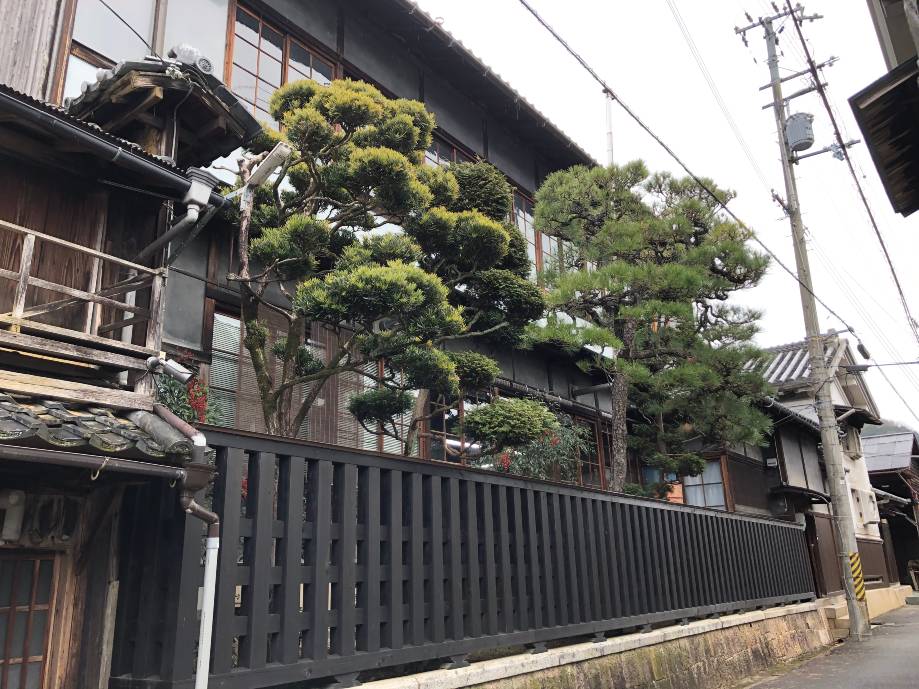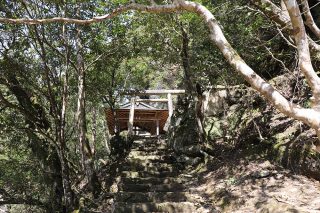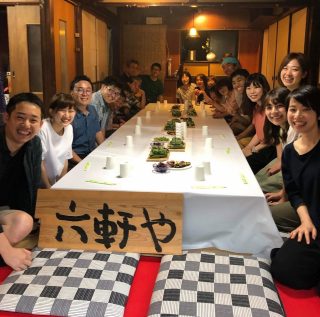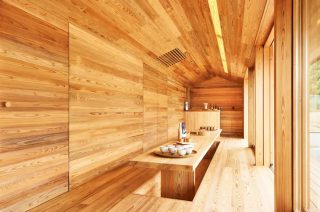It was midsummer when I decided to visit “Sankirou” Guesthouse in Yamato-kamiichi. The purpose was not to stay but to meet with a friend who would also introduce me to the owner of the guesthouse as well. After the meeting was finished I left and walked out into the street alone. When I started walking to the east where my car was parked, I suddenly felt like I was called from behind and turned around.
Reflectively, I turned to look but there was nothing but the empty streetscape in front of me. I couldn’t see anything of particular interest or the figure that seems to have called me… Looking back now, I think that it wasn’t actually a voice…
Still wondering what I had reacted to, I returned home. Later on in October, I had an opportunity to visit again and took a walk alone in the direction I was “called” before.
The cityscape was lined with various buildings with construction styles ranging from the Showa era to those with a much older history, but I found a building with a distinctly different atmosphere. “Did this building call to me?” My instincts were guiding me. It had a tall and dignified atmosphere reminiscent of an old wooden schoolhouse, rather than an ordinary house. Across from the building, on the other side of the street, there was a magnificent house with a modest atmosphere about it. There was a very different atmosphere here compared to the charming buildings I had seen up to that point.
After walking for a while and observing the townscape for some time, I went back and asked a local person about the building.
“That’s Kimura Forestry.”
He answered as if to say “but you already know this, right?” To be honest, the name did not ring any bells.
After hearing the details, I understood that the building was the headquarters and house of Kimura Forestry, one of the “big three owners of mountain land in Japan”, and that everyone in Yoshino knows the name. Upon hearing this, I became more interested! However, Kimura Forestry is disconnected from local people, with many having never entered the company building nor the house. The mystery just deepened…
“Ah, I want to see the inside of the building! What sort of wood is used in its construction? What about design style? How does the air flow differently in there?” My thoughts were racing with possibilities.
I later learned that the main gate of the main house was actually located on the side facing the Yoshino River. When I saw the magnificent gate structure, I noticed how difficult it was to see the inside of the building. It would be great if the Kimura family could plan a “special opening day” so that even common people like myself could see inside. Actually, I’d love to plan it all out myself! Indeed, now I’m secretly looking forward to the day when I can form such a relationship with the owners.
In fact, I’ve learned that there are many historical buildings in Yoshino. To local people, these buildings seem to be commonplace, ordinary houses that have always been part of the townscape they live in. However, some of them have important backgrounds, such as being the birthplace of an influential person or having significant ties to historical events.
Among these locations, what I am interested in right now is the birthplace of Mr. Sakamoto Senji. Mr. Sakamoto was an important businessman for Yoshino. He is famous not only for his forestry work, he also started a bank, a railway company, and to his own surprise, he built the “Miyoshino Athletic Stadium” using the most advanced equipment available in Japan at that time. Among its many features, the stadium has a 400-meter track, stands, a baseball field, a tennis court, a court for various ball games, and showers. Word is that Hitomi Kineda, the first Japanese woman to win an Olympic medal, trained at this stadium.
I was unaware at first that the home of someone who had accomplished such great things was still standing in Yoshino and after hearing about the home, I felt compelled to go and see it for myself. Well, I finally had the opportunity to check it out and can report that gazing upon its now quiet figure made me feel as if I was looking at a national treasure.
There are buildings like this that I want more people to know about. I want to help to ensure that they will not just become decaying vacant houses. I think this is maybe why I was called to Yoshino.
Speaking just as an architect, Yoshino has a unique architectural style of structure called a “Yoshino Building” that is often seen in the areas where the ground is sloped, especially along Mt. Yoshino and the Yoshino River. “Yoshino Buildings” look like two floors when viewed from the roadside, but three to four floors when viewed from the opposite side (with the extra floors built below, following the slope). Maybe it’s just because I’m an architect, but I think it is refreshingly simple fun to find these bits of architectural style that have their roots in the local community,




